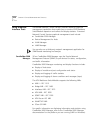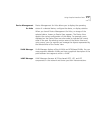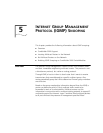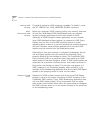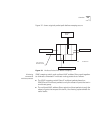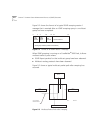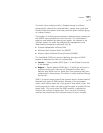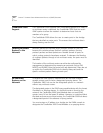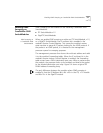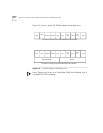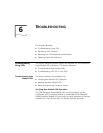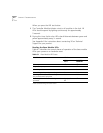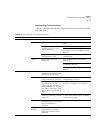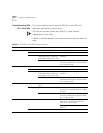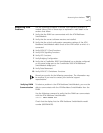
5-6
C
HAPTER
5: I
NTERNET
G
ROUP
M
ANAGEMENT
P
ROTOCOL
(IGMP) S
NOOPING
CoreBuilder 5000
Support
The CoreBuilder 5000 supports 46 IP multicasting groups by IP relay. If
no multicast router is detected, the CoreBuilder 5000 hub acts as an
IGMP querier to allow the network to determine hosts that are
members of a group.
The CoreBuilder 5000 allows the user to create ports in the vbridge
that are classified as router ports. This ensures that multicast data is
always flowing over the link.
Locating Multicast
Routers in the
Network
Multicast packets are received by all multicast routers on the LAN
because the switches always flood all multicast packets. Routing
protocol packets and data packets are flooded toward all ports on
which routing protocols have been received. To decrease the flooding
of multicast packets through a hub multicast router, the ports must be
identified.
The location of the multicast routers can either be configured by
management or determined by snooping on protocols such as PIM,
MOSPF, and DVMRP. After the router ports are determined, filters are set
up within the CoreBuilder 5000 hub to identify these ports and the
specific multicast packets flowing to each port.
No Multicast
Routers on the
Network
To receive the IGMP reports, networks that do not have multicast
capable routers need to have a designated querying device. The
CoreBuilder 5000 hub can be the designated querier in a network
without any multicast routers.
The designated querier is the IGMP query-capable device with the lowest
IP address in a flooding domain. If a multicast router is found on the
network, the CoreBuilder 5000 SwitchModule does not send IGMP
queries, even if it has the lowest IP address. However, in a switched fabric
that does not have any multicast routers, the CoreBuilder 5000 hub elects
a designated querier in the absence of query packets.
You must assign an IP address to a vbridge via the DMM console to
designate the CoreBuilder 5000 SwitchModule as a querying device.



